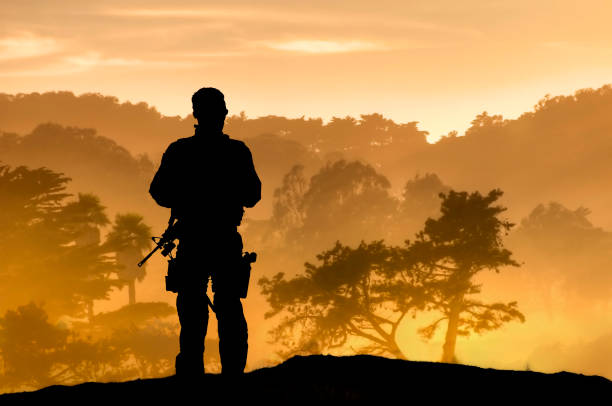Africa at War: The Conflicts Across the Continent.
Rwanda and DRC: A Fragile Ceasefire
The President of Rwanda, Paul Kagame, called for an immediate and unconditional ceasefire in eastern Congo during his first meeting with his DRC counterpart since the M23 rebels intensified their offensive in January. The mediation, facilitated by Qatar’s Amir in Doha, left uncertainty about whether the M23 insurgents, who now control more territory than ever, would comply. This development follows a series of escalating tensions that have gripped the region.
Rising Tensions and Diplomatic Fallout
The European Union Council imposed sanctions on Rwanda’s military and government on Monday, driven by Belgium’s backing of DRC. Rwanda, accused of fueling the conflict, retaliated by severing diplomatic ties with Belgium, leading to both countries expelling each other’s diplomats within 48 hours. Just a day later, the presidents of Rwanda and DRC met in Qatar, leading to the ceasefire agreement. Meanwhile, M23 rebels had pulled out of scheduled negotiations with DRC, further complicating the already volatile situation.
Foreign Interests in DRC’s Resources
The ongoing crisis in DRC mirrors historical struggles over African resources. Many external forces, including Belgium and the European Union, have vested interests in DRC’s vast mineral wealth. Belgium’s historical exploitation of DRC dates back to King Leopold’s rule, leaving a legacy of resource-driven conflicts. The severance of ties between Rwanda and Belgium indicates fractures in agreements, underscoring that economic interests often dictate foreign involvement.
Qatar’s Unexpected Influence
Amid the ongoing diplomatic reshuffling, Qatar emerged as a key player, mediating discussions between Rwanda and DRC. Previously, peace negotiations under the East African Community (EAC) and in Angola had faltered. The M23’s withdrawal from talks earlier in the week signaled foreknowledge of impending changes. Qatar’s sudden involvement has raised questions about its role and objectives in the region, as various nations with limited natural resources position themselves to benefit from DRC’s wealth during the turmoil.
The Impact on East Africa’s Stability
DRC’s strategic importance extends beyond its mineral wealth. It is the heart of Africa, home to vital resources, including extensive freshwater reserves and vast forests essential for global carbon absorption. Despite its immense wealth, DRC struggles to fund its own elections due to systemic exploitation. The conflict has also strained relationships within the EAC, as some member nations have been implicated in resource extraction from DRC, contradicting regional stability efforts.
The Global Scramble for Resources
The competition for DRC’s resources ties into broader global shifts, including the fourth industrial revolution and the rise of artificial intelligence. Many nations, including China, have sought alternative technologies requiring fewer DRC-sourced materials but continue to compete for access to its minerals. The implications extend beyond East Africa, threatening continental stability. If Africa’s wealthiest nation remains unstable, it raises concerns for less resource-rich neighbors that may face similar external interventions.
African Solutions to African Problems?
The involvement of external players like Qatar raises concerns about Africa’s capacity to resolve its own conflicts. Historically, post-colonial African leaders have often maintained ties with former colonial powers, perpetuating dependency. The case of Gabon exemplifies this trend, where a coup replaced a leader with his cousin, maintaining the status quo. Across Africa, leaders advocating self-sufficiency frequently face assassination, a pattern seen in nations like Burkina Faso, where numerous reformist leaders have been eliminated.
Internal Divisions and Leadership Challenges
African nations continue to be divided along tribal lines, exacerbated by colonial-era borders. Communities such as the Luhya in Kenya and Uganda or the Tutsis in Goma and Rwanda are often separated by arbitrary boundaries, leading to internal strife. While resource-based conflicts are natural, educated governance should facilitate equitable resource distribution. Instead, African leaders often negotiate resource deals with external entities, weakening internal cooperation and regional solidarity.
The M23 Rebels and the Fight for Territory
The M23 rebels, having captured key cities like Goma and Bukavu, are unlikely to relinquish control without a fight. With North Kivu being rich in cobalt, coltan, gold, and titanium, the DRC military should have prioritized securing these areas. The surprise Qatar-mediated meeting has shocked external backers of the conflict, who may now escalate efforts to counteract new geopolitical shifts, further fueling instability.
Read Also: Kenyan Authorities Uncover Mexican Cartel Drug Lab in Namanga
Sudan and South Sudan: A Cycle of Conflict
The crisis in Sudan, now spilling into South Sudan, mirrors past power struggles. Sudanese citizens overthrew their dictator in 2011, only to face prolonged instability. Similar patterns have emerged across Africa, where leaders promising change are often undermined. Without addressing internal governance and external interference, Africa risks perpetual cycles of conflict and exploitation.
The African continent stands at a crossroads, where foreign interventions, internal divisions, and leadership challenges continue to shape its future. Addressing these issues with self-driven solutions remains the only path toward true stability and prosperity.
Africa at War: The Conflicts Across the Continent.



